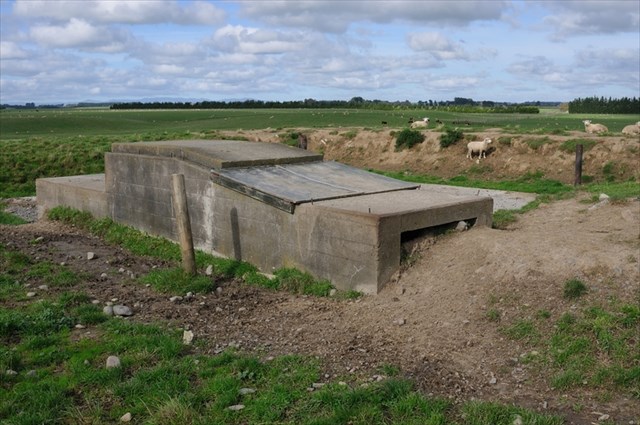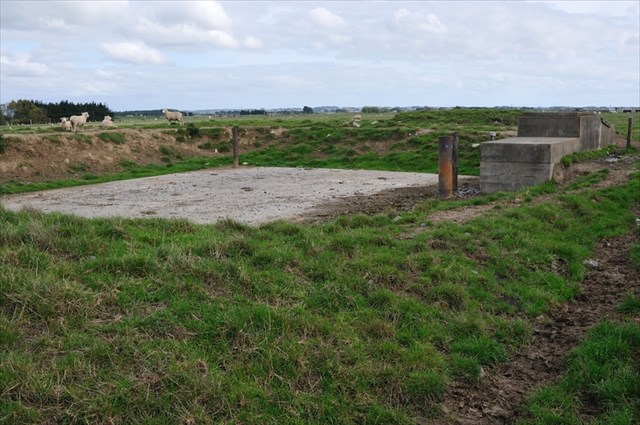War Time Preparations
From early in 1940, New Zealanders began to live in fear of attack or invasion, first by the Germans and later by the Japanese.
Due to the deteriorating situation, it was decided to provide key Stations with alternative underground concrete bunker-style operations rooms that would be able to escape the worst of air raids. At Ohakea, the £8,000 bunker was sited on Wilsons Rd so as to be adjacent to the Bulls/Sanson telephone lines. Well ventilated, it was to be supplied with electrical power from its own generator 100yrds further along the road. The Operations room was to be accessed via a secure door and stairway, the only part visible above ground level.


By May 1940 the Germans occupied Norway, the Netherlands, Belgium and France, and Britain faced the direct threat of invasion. Although appalled by events in Europe, New Zealanders felt far from the danger zone. But German raiders, or armed merchant cruisers, became active in New Zealand waters, laying mines and attacking Allied ships. Their targets were the vessels sailing to or from the country, transporting troops, freight and passengers. In the second half of 1940 they sank four ships in the seas around New Zealand, with the loss of more than 50 lives.
The Germans also targeted the tiny island of Nauru, a British Commonwealth territory north of the Solomons, which exported thousands of tons of phosphate each year to NZ, Australia and Britain. The chemical was vital to fertilise land growing much-needed food. German raiders sank five phosphate ships in early December, then on Dec 27th 1940, bombarded Nauru Island, destroying the phosphate plant. Prisoners captured in the Pacific rose to 700 in the space of six months.
The attack provoked a stir in New Zealand. The Defence Force activated the Home Guard, and civilian authorities prepared for the worst. Before the war began, the government had devised the Emergency Precautions Scheme (EPS), later to be renamed as Civil Defence, to cope with disasters. 'Enemy action' was one of the possible dangers listed in a 1939 EPS booklet, sent out to local authorities. The blackout began in coastal areas of New Zealand in February 1941. Black curtains, paper, or even paint, covered windows in most homes. Street lighting was also dimmed, making life difficult through the winter nights that followed.
On 7 December 1941, the tension rose dramatically. The Imperial Japanese Navy’s planes bombed Pearl Harbor, an American naval base in Hawaii, killing more than 2400 people and sinking five battleships. It was an act of aggression that caused the United States to join the war, to the relief of many New Zealanders, but the Pearl Harbor attack was also unsettling.
Historians have since revealed that the Japanese threat was slight. Those who lived through that period, however, recall genuine fear. Speculation was rife about where the Japanese would land, and what they would do to New Zealanders. People in exposed coastal areas felt especially vulnerable. Trench digging, air raid practices and complex emergency planning were under way in every city. Hospitals were ready for casualties. There was a belief that no real defence of the country would be possible. Some regarded the precautions against attack sceptically. But others remember taking them very seriously and having air raid practices in trenches at school.
Thanks to Wikipedia and a snippet from Bill Taylor's unpublished book 'Ohakea - A Place of Birds.'